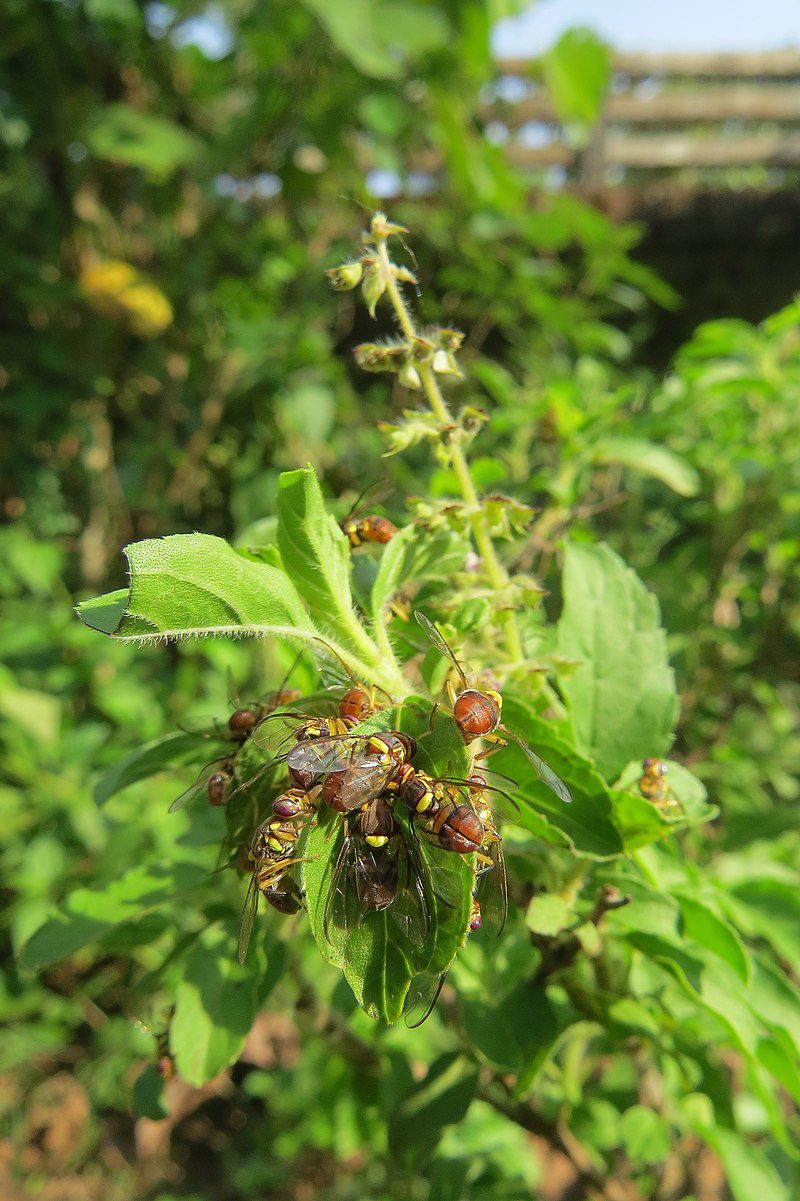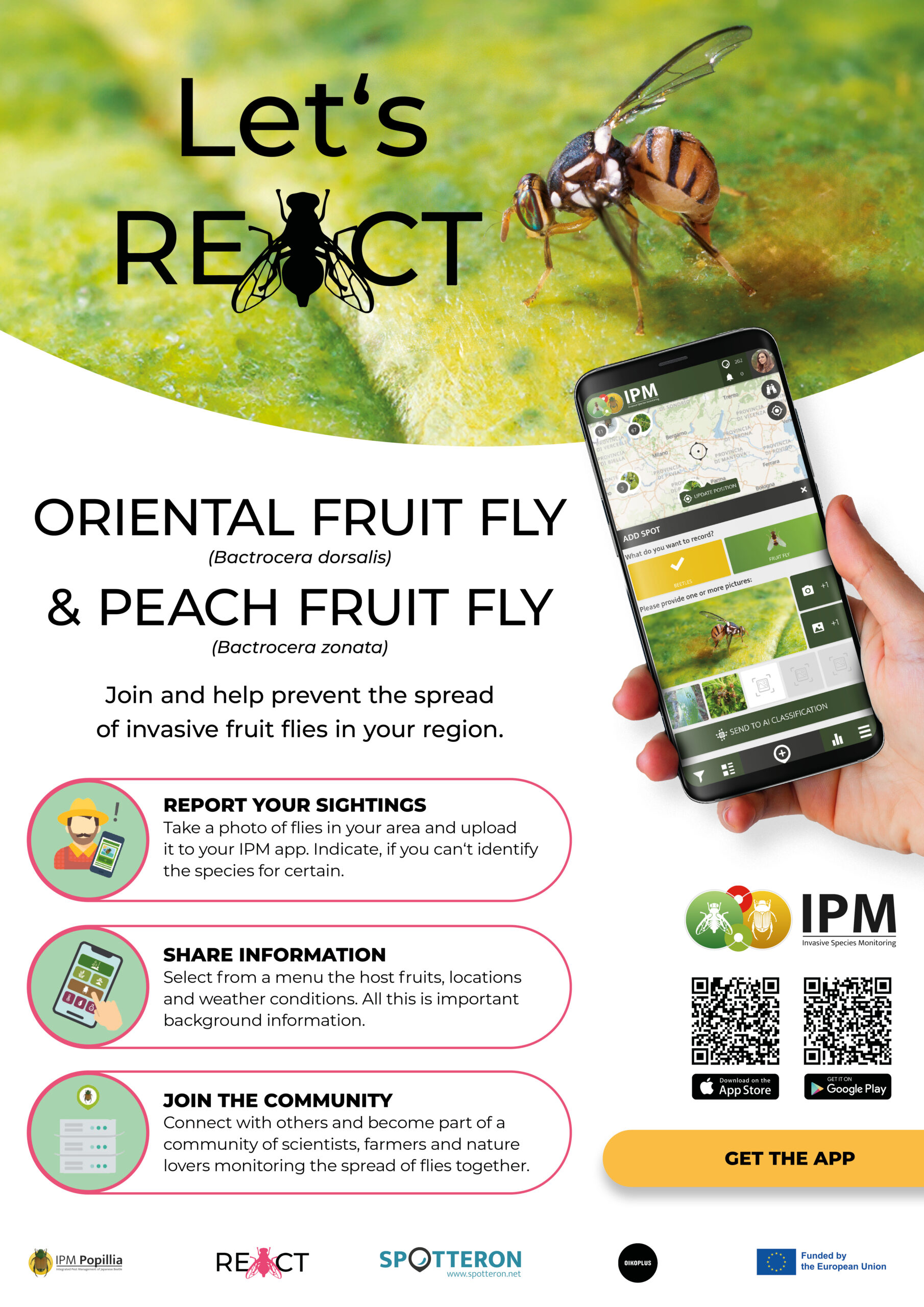Help Squash a Pest: Spot Invasive Flies with IPM – Invasive Species Mapper!
07 June 2024
Have you ever wondered how scientists track the arrival of new insect species that could wreak havoc on European agriculture? Traditional methods involve trapping and field surveys, which can be time-consuming and geographically limited. In addition to trapping, scientists are also using DNA barcoding to identify invasive flies in a very early stage (for example, when they are being transported on a particular fruit). Because all these techniques come with high costs, the two EU-funded projects REACT and IPM POPILLIA have joint forces to support the detection of invasive pests through Citizen Science. By uploading mobile phone photos of the insects and entering parameters such as host species (e.g. fruit and vegetables), weather and location, users can participate in mapping the species’ distribution. Important: They do not have to know for sure which insects they photograph. This is left to the judgment of the scientists involved in the projects.
Bactrocera zonata & Bactrocera dorsalis spreading to Europe
The European and Mediterranean Plant Protection Organization EPPO, confirms that both flies, Bactrocera dorsalis (see EPPO global distribution database) and Bactrocera zonata (see EPPO global distribution database), are top priority pests.
The two fly species spread differently. Bactrocera dorsalis has already spread further than Bactrocera zonata. Bactrocera zonata has been sighted in Austria, France, Italy, the Netherlands, and Slovenia. Except for France, the reported sightings of this species are considered isolated incidents. This species may have been introduced through trade or travel. The situation in France is slightly different. The species has not been able to establish a permanent population there, meaning it has not been able to reproduce. In 2023, four flies were independently found near Orly, prompting the change in status to “transient.” There have been no major outbreaks to date.
Based on EPPO data, there haven’t been any major outbreaks of Bactrocera dorsalis. The initial occurrences have been reported in Austria, Belgium, the Netherlands, Slovenia, and Switzerland. The situation is a bit more concerning in France and Italy. In France, Bactrocera dorsalis hasn’t been regularly observed since 2019, but there have been more frequent sightings in various locations, especially near entry points like ports and airports. In Italy, the species has been consistently spotted since 2018. Although its status there is still considered ‘transient’, there have been minor outbreaks in the Campania region and Trentino-Alto Adige in 2024. These isolated outbreaks occurred independently of entry points, mainly in close proximity to agricultural facilities.
Host plants of Bactrocera zonata and Bactrocera dorsalis
Both flies have hundreds of different host plants and crops, implying a wide variety of plants to feed on. Some of these host plants are, however, of major importance. For example, Bactrocera zonata‘s major host plants include mango, peach, guava, and many others. Likewise, Bactrocera dorsalis has a wide range of host plants, including papaya, avocado, and numerous other fruits and crops. Both fruit flies lay their eggs into juicy fruits. When the eggs are laid, fluid emerges from the puncture site in the form of a droplet, which later dries up and appears as a brown, resinous coating. After hatching, the maggots bore their way into the host. The activity of the first instar larvae is limited to the area below the oviposition point. The second and third-stage larvae are voracious feeders, penetrate deeper into the fruits and are mainly responsible for the destruction of the host.
Report your sightings to protect Agriculture
The IPM app is designed for everyone, regardless of scientific background. The app guides you through the identification process and makes reporting sightings a breeze. No scientific expertise is needed to report a sighting of a fly or beetle and in case you are not too sure about the species you‘ve been spotting, there will be a bunch of researchers in the community who will either validate or dismiss the spotting. By joining the IPM community, you’ll be part of a community of citizen scientists safeguarding Europe’s agricultural future. With the app, you can:
- Report sightings: Snap a photo of the flies you have seen and submit it to the app. The data will be used by scientists to track the spread of these pests.
- Contribute to science: The more people join, the earlier we identify newly infested areas. You will be playing a vital role in protecting European agriculture from invasive threats.
- Monitor your sightings: Create a map with your sightings to keep track of pest invasions on your fields, in your city and while on the move.
- Join the IPM community: Find out about other invasive pest enthusiasts in your region and comment on their findings.
Resources
Download Link for Android: IPM App on Android Play Store (play.google.com)
Download Link for iOS: IPM App on the App Store (apple.com)
Identification key Bactrocera zonata: Bactrocera zonata ID Key (react-insect.eu)
Identification key Bactrocera dorsalis: Bactrozera dorsalis ID Key (react-insect.eu)


